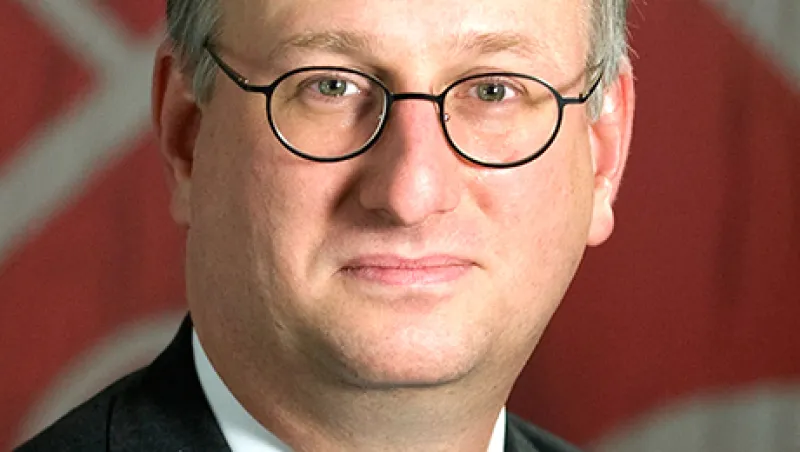Scott Clemons, chief investment strategist at Brown Brothers Harriman & Co., recalls how a former managing partner once put the firm’s approach into perspective: “He said that the partners of Brown Brothers Harriman are people who think like people of action but act like people of thought.”
BBH occupies a unique position in U.S. financial services. Founded in 1818, the country’s largest and oldest private bank is also the biggest such independent partnership remaining on Wall Street by assets, revenue and number of professionals.
New York–based BBH’s fewer than 40 partners oversee $62 billion in assets under management and some $4 trillion under custody. With an alumni list that includes former president George H.W. Bush and ex–Federal Reserve Board chair Alan Greenspan, the bank has built formidable brand recognition while avoiding the limelight. By protecting capital and eschewing principal transactions in favor of client services, it has weathered storms ranging from the Panic of 1857 to the Great Depression. BBH’s commercial lending division emerged largely unscathed from the credit crisis in 2009.
At first glance such a deeply rooted and conservative culture might appear resistant to change, but that’s not always the case. In January 2014, BBH began radically overhauling its wealth management division to create a new private banking group with more than 250 professionals overseeing $26.5 billion in assets. Drawing specialists from its corporate advisory, commercial lending and asset management divisions to augment veteran wealth managers, the firm aims to create a single service team to handle the complex needs of entrepreneurial wealth.
Although BBH’s roots lie in commercial and trade lending, wealth management has long been a principal business line as the firm guided the family assets of business-owner banking clients. BBH offers personal banking, trust services and asset management to ultrahigh-net-worth households. Its service-focused approach has lent itself well to these private client services, and the bank’s professionals remind prospects that because it’s a private partnership, the owners invest alongside customers.
“This structure allows us to prioritize our clients’ goals while aligning our interests with them over long periods of time,” says Jeffrey Meskin, partner and head of private banking. A hallmark of the bank’s services for individual investors is patient compounding and risk management through fundamental analysis.
Although the new structure looks like a sea change, BBH insiders regard it as a natural progression. “This is not a change in culture,” says Clemons, a 25-year veteran of the bank. “If anything, it is a more tangible expression of our culture, an expression of the alignment of interests between ourselves and our clients.”
The biggest departure is in the calculation of client relationships. In the past, BBH required an eight-digit minimum of investible assets to establish a new account, but the new regime weighs the value of each relationship against all of the firm’s business lines. This allows BBH’s investment and estate planning experts to work with clients whose net worth is largely tied up in private companies that have commercial lending or advisory relationships with the bank.
“This can be seen as part of a larger trend in the industry to look beyond organizational boundaries,” says Ashish Jain, a partner in the financial services practice at Strategy&, a New York–based management consulting subsidiary of PricewaterhouseCoopers. Many commercial lenders are seeking to bridge the gap between extending credit to companies and managing the assets of business owners, Jain notes. But he also points out that most of BBH’s commercial lending rivals are focusing on affluent and mass-affluent clients rather than the ultrahigh-net-worth segment the bank has targeted.
Senior leaders at BBH’s private bank are mulling the idea of broadening the firm’s geographic reach, but not in the same way as the competition. “Historically, the typical approach among the bigger banks expanding into new markets has been to hire an experienced local team with strong existing relationships to establish a presence,” Jain says.
Rather than spend a lot of money hiring talent, BBH will combine strategic partnerships and remote access, Clemons explains. “Due to technology, geography matters less and less, and we will never have branch offices on every corner,” he says. “Wherever there are new cycles of wealth creation, we will seek to build relationships and, through friends of the firm, to raise brand awareness.” As the bicentennial of BBH’s founding approaches, one question is how a low-key, conservatively managed bank can keep its brand relevant in a wealth management industry undergoing competitive upheaval. “I’m 61, and even among my own generation, even after the credit crisis, there is still a focus on trendy investment themes and the latest products offered by Wall Street,” says Michael Rifkin, manager of a Wilkes-Barre, Pennsylvania–based family office that has invested with BBH. “It’s an uphill battle to convince people that investing in quality companies for the long term and partnering with a financial institution that carefully manages risk are the right decision.”






